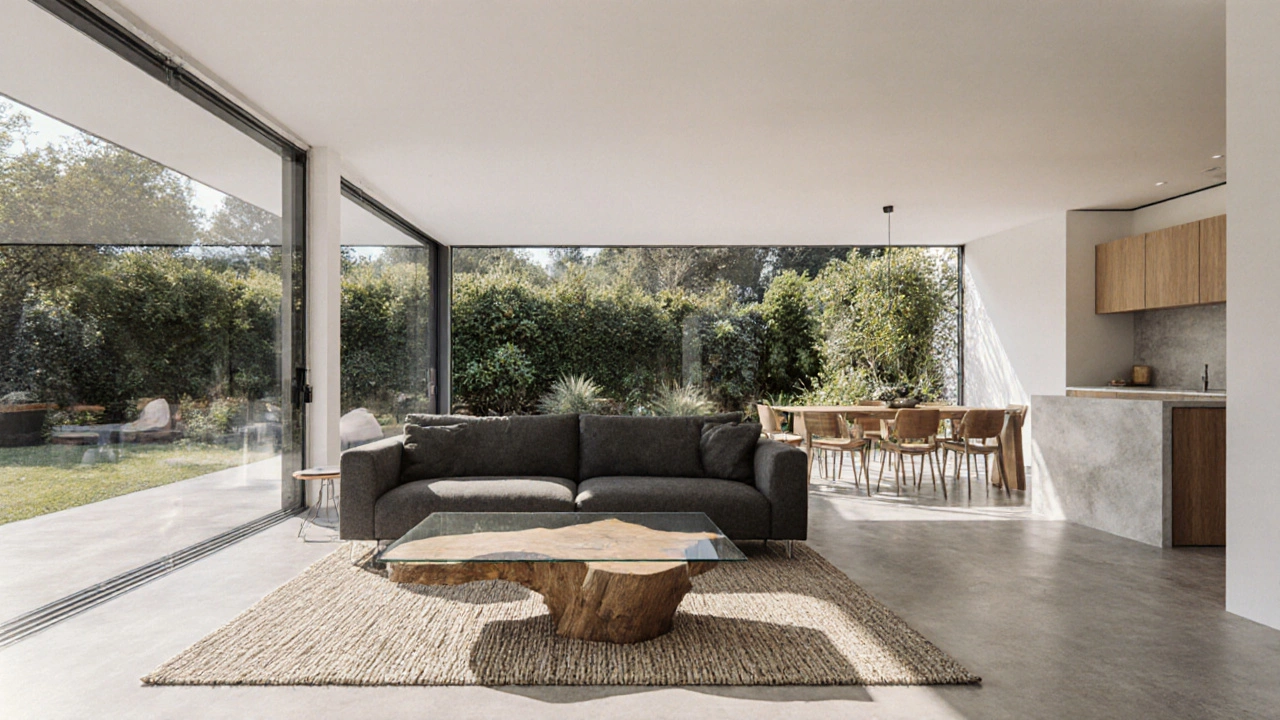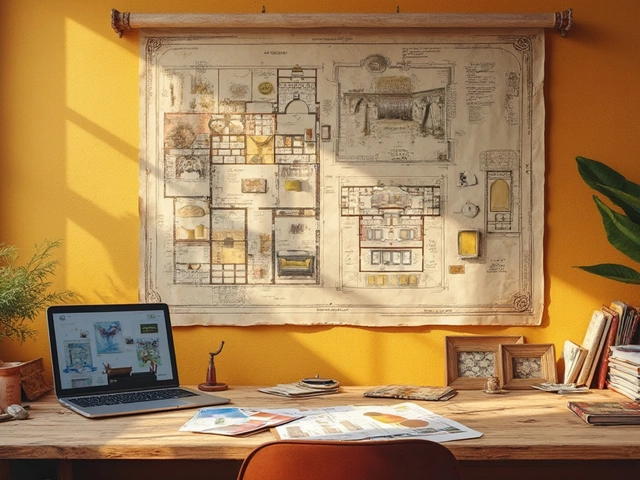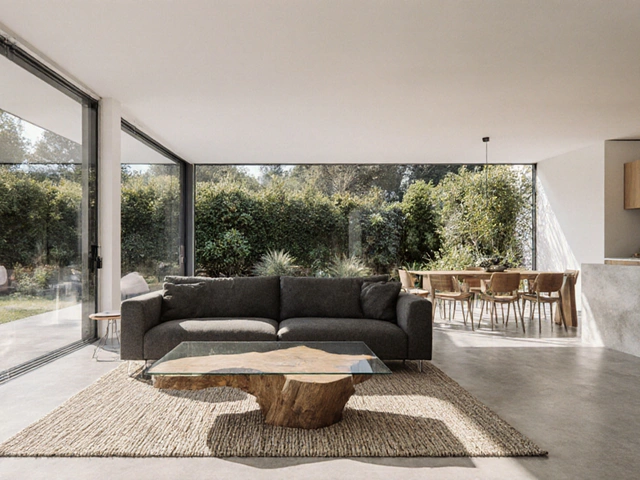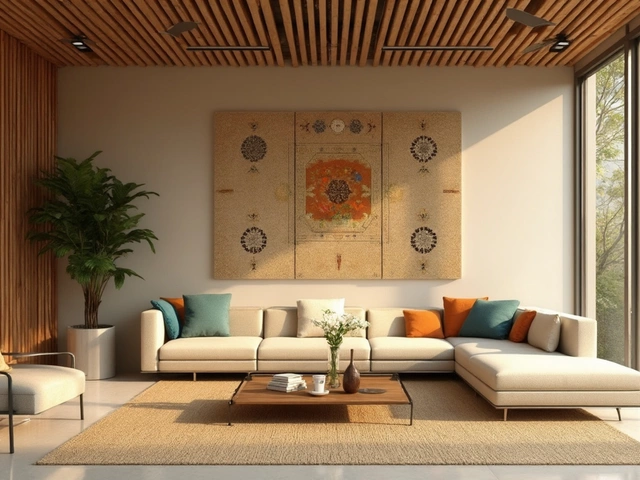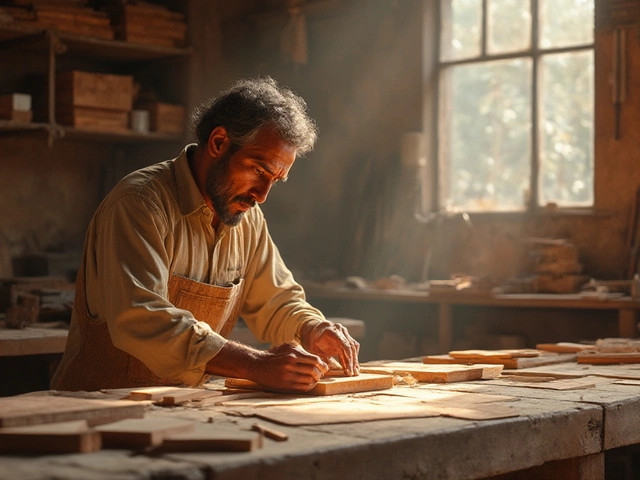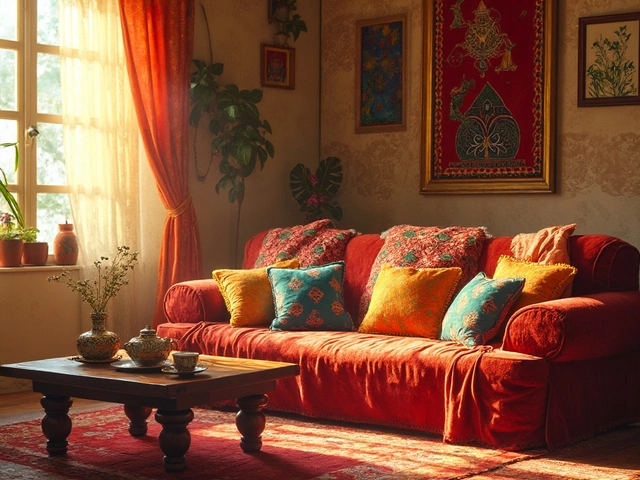Modern Home Style Identification Quiz
Answer these 7 questions about your home's design to see how strongly it aligns with modern style principles. Based on the characteristics outlined in our guide, you'll receive a personalized assessment.
Your Modern Style Assessment
Ever walked into a home where everything feels airy, uncluttered, and instantly timeless? Chances are you’ve stepped into a modern house style space. While the term gets tossed around a lot, many people aren’t sure what exactly defines it, how it differs from other looks, or which sub‑styles fall under the same roof. This guide breaks down the core idea, the most common variations, and practical tips you can use right now to make your own home feel modern.
What exactly is a modern house style?
When designers talk about Modern house style is a design approach that emphasizes clean lines, open spaces, and minimal ornamentation, they’re focusing on simplicity that feels fresh rather than empty. Think of a canvas where every element has a purpose, and there’s no unnecessary frill. The style grew out of the early‑20th‑century modernist movement, but today it’s evolved to include new materials and tech‑savvy solutions.
Key characteristics you’ll spot immediately
- Open floor plan is a layout that removes interior walls to create a flowing, large‑scale space. This makes rooms feel larger and encourages natural light to travel further.
- Large windows are floor‑to‑ceiling or expansive glazing that blurs the line between indoor and outdoor. They bring the outside in and keep the environment bright.
- Natural materials such as wood, stone, and concrete are used for their texture and honest appearance. They soften the sleekness of metal or glass without looking dated.
- Neutral color palettes dominated by whites, grays, and earth tones, punctuated by single bold accents (a teal sofa or a copper light fixture).
- Built‑in storage and concealed hardware that keep the visual clutter at bay.
How modern differs from other popular looks
Modern house style often gets confused with terms like “contemporary,” “minimalist,” or “industrial.” While they share some DNA, each has its own vibe.
- Contemporary architecture is the design of the current moment, constantly evolving with trends and technology. It can borrow from modern, but it also embraces bold colors, curvy forms, and sometimes even decorative elements.
- Mid‑century modern is a post‑World WarII style that emphasizes organic shapes, wood tones, and retro‑futuristic furniture. Its hallmark is the iconic floating‑leg chair and a warm, nostalgic feel.
- Minimalist design is an extreme reduction of elements, focusing on pure function and the occasional statement piece. Minimalism can feel sterile if not balanced with texture or warmth.
- Scandinavian style is a northern European interpretation that mixes modern simplicity with cozy, hygge‑focused details. Light wood, soft textiles, and a playful yet restrained color scheme define it.
- Industrial style is a look inspired by factories, featuring exposed brick, metal piping, and reclaimed wood. It’s edgier and less about pristine finishes.
Understanding these nuances helps you decide which flavor of modern you’re after, rather than ending up with a mismatched mash‑up.
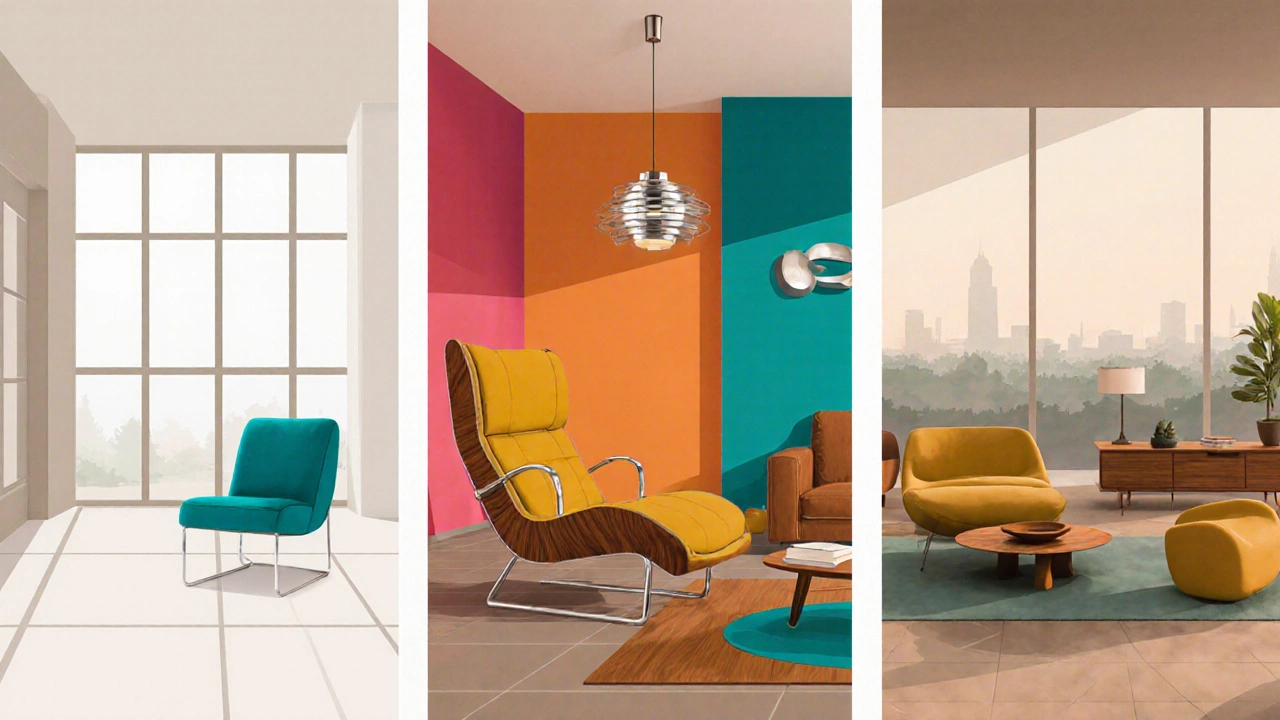
Popular modern variations you can mix and match
Even within the modern umbrella there are sub‑styles that people love to combine. Below is a quick rundown of the most common variations.
- Modern Farmhouse - Merges the sleek lines of modern with rustic barn‑door accents, shiplap walls, and a warm color story.
- Urban Modern - Takes cues from city lofts: concrete floors, black metal fixtures, and a monochrome palette.
- Eco‑Modern - Puts sustainability front and centre. Recycled glass, solar‑ready roofs, and indoor‑plant walls are standard.
- Tech‑Forward Modern - Smart home integration, hidden speakers, and touch‑controlled lighting dominate this version.
Feel free to blend elements-maybe an industrial metal light fixture in a Scandinavian‑inspired room. The key is to keep the overall feel cohesive.
Design tips to nail the modern look
- Start with a neutral base. Paint walls white or light gray, then layer texture through wood flooring, woven rugs, or a stone accent wall.
- Maximize natural light. If you can, swap heavy drapes for sheer linen panels or no curtains at all.
- Choose furniture with clean geometry. Low‑profile sofas, rectangular coffee tables, and sleek dining chairs keep the space uncluttered.
- Introduce one statement piece. A bold art print, a sculptural chandelier, or a vibrant area rug can add personality without overwhelming the scene.
- Hide storage. Built‑in wardrobes, floating shelves, and under‑bench drawers keep surfaces free of everyday objects.
- Mix textures, not patterns. Pair smooth concrete with a plush velvet throw; avoid busy patterns that compete with the minimalist vibe.
Common mistakes and how to avoid them
- Going all white. Pure white can feel sterile. Add warmth with wood floors or a single warm‑tone accessory.
- Neglecting scale. Oversized furniture can dwarf a room, while tiny decor can get lost. Aim for proportional pieces that complement the floor area.
- Over‑accessorising. Minimalism isn’t about stuffing every surface with objects. Keep decor purposeful.
- Ignoring the outdoor view. Large windows deserve a view. If your surroundings are dull, consider a living wall or strategic landscaping to enhance the vista.
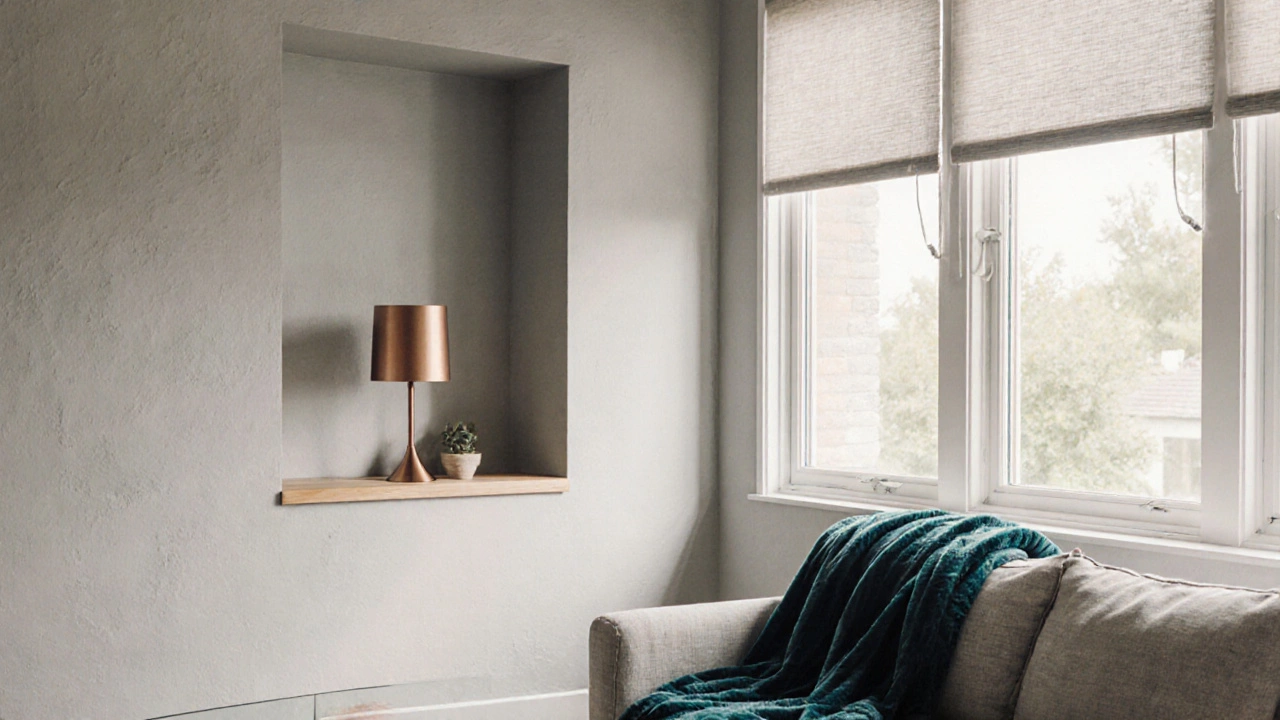
Quick reference: Modern style vs. close relatives
| Style | Typical Era | Key Materials | Color Palette | Signature Feature |
|---|---|---|---|---|
| Modern house style | 1920‑1970 (evolved) | Glass, steel, concrete, natural wood | Neutrals + one bold accent | Open floor plan |
| Contemporary | 2000‑present | Mixed (metal, wood, glass) | Varies, often vibrant | Current‑trend elements |
| Mid‑century modern | 1940‑1965 | Teak, walnut, chrome | Earth tones, mustard, teal | Organic‑shaped furniture |
| Minimalist | 1990‑present | Concrete, glass, white wood | All‑white or grayscale | Extreme reduction |
| Scandinavian | 1950‑present | Light wood, wool, linen | Soft whites, muted blues | Cozy yet sleek |
| Industrial | 2000‑present | Exposed brick, metal, reclaimed wood | Dark gray, black, rust | Visible ductwork & pipe |
Next steps: Bringing modern into your home today
Start small. Swap out a bulky coffee table for a slim glass version, or replace heavy curtains with simple roller blinds. As you get comfortable, tackle bigger projects like removing a non‑load‑bearing wall or installing floor‑to‑ceiling windows (check local building codes first!). If you’re unsure about structural changes, a quick consult with an architect or interior designer can save headaches later.
Remember, the modern house style isn’t about buying the most expensive furniture-it’s about creating a space that feels purposeful, bright, and timeless.
Frequently Asked Questions
What is the difference between modern and contemporary design?
Modern design refers to a historical movement (1920‑70s) focused on function, clean lines, and industrial materials. Contemporary design describes what’s current-so it can borrow from modern, but also incorporates today’s trends, bold colours, and new tech.
Can I mix modern style with rustic elements?
Yes. The mix is called Modern Farmhouse. Keep the overall line work simple and let the rustic wood act as an accent rather than the dominate feature.
Is an open floor plan essential for a modern house?
It’s a hallmark, but not a hard rule. If your home’s layout can’t support a full open plan, you can still achieve a modern feel with large windows, minimal partitions, and consistent material finishes.
What colours work best in a modern interior?
Start with a neutral base-white, light gray, or soft beige. Add a single bold accent like navy, emerald, or copper to keep the space lively without clutter.
How can I make a small apartment feel modern?
Use light‑colour walls, keep furniture low‑profile, and maximise natural light. Mirrors on opposite walls can double the sense of space, and hidden storage keeps surfaces clear.
